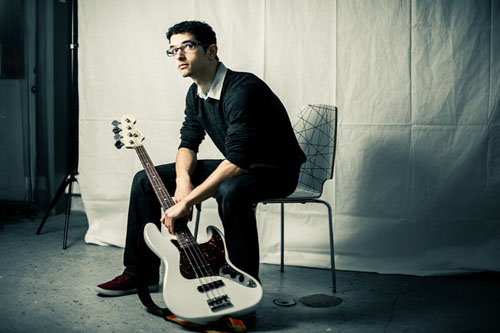For musicians, practice is a must. Learning music is a skill and, like any skill, it needs to be developed properly. However, practice doesn’t need to be difficult and it doesn’t need to be something to moan and groan over! Are long practices a bad thing? Not necessarily. A student who is motivated to put in additional practice and hone their craft should be encouraged. But teachers must bear in mind the influence they have on their students – positive and negative. Haphazard instruction regarding what to practice plus instructions to practice for long periods of time is a powder keg waiting to go off and turn the student away from not wanting to pursue music. Music teachers are tremendous at instilling strong, lasting loves of music into students young and old. However, they are just as capable of turning students off from music. It’s very important that we share good, structured, specific information about practicing with our students so they achieve the best results.
How Academic Research Changed How and Why We Practice
The biggest misconception about practice is that it is only effective if you invest a large amount of time. On the surface, the logic adds up very well. You invest a long portion of time into learning a craft and your reward is improvement in that skill. The more time you invest, the better you’ll be. Simple, right? Perhaps there was a time when it made sense to practice 4, 5 even 6 hours a day at a craft. The culture might have been different and the lifestyle might have allowed for such lengthy spans of practice. Today, though, we know better. Researchers including K. Anders Ericsson, Robert Johnson, Edwin Locke, Gary Latham, and others have worked to understand how we can improve skill development. I’ll discuss their work more extensively in part two of this series.
Why should I practice less?
Dr. Noa Kageyama, author of the blog, The Bulletproof Musician, penned an article on Lifehacker that neatly summarizes the main reasons why long practices are not effective. The main takeaways are:
- Your brain disengages after a certain period of time. After 90 minutes of focus on any activity, your brain turns off and ‘stops learning’. Instead of your mind and muscles working together to absorb and process the music and learning experience, your muscles are expected to take over.
- Reduced confidence. If you’ve ever practiced for 3, 4 even 6 hours in a relatively consistent way, and then gone on to perform, you might have caught yourself feeling anxious and questioning whether or not you actually knew your music. This is a common condition of lengthy, repetition-based practices and the results are exactly what was discussed in the last bullet: your brain becomes disengaged and bored with repetition beyond a certain point and then ‘turns off’, leaving your hands to do the work.
- Simply put: it’s boring. Nothing can suck the fun out of something more than feeling like the only way to do it is the exact same way, over and over, for hours on end.
It’s easy to overcome these common practice pitfalls. Practice shouldn’t be a grinding experience where it feels like every session is a marathon, you’re tired after the first mile, and you need to force yourself to go another two. If you’re feeling fatigue from practice, then stop! Fatigue is not a weakness: it’s your mind and body telling you it’s no longer engaged with the activity and that anything beyond this point will be a waste of time. After all, the key to a successful practice session, where musical information is learned, absorbed and played back with confidence while pushing the student forward to new musical challenges and frontiers, is focus.
Conclusion
Practice does not need to be long in order to be effective – quite the opposite! The ‘ideal amount of practice’ is between 30-90 minutes focused on a very specific musical task. Teachers should encourage their students to practice with purpose. It’s very easy and convenient to simply tell students to go home and practice what they learned during the session. This creates an “out of sight, out of mind” situation in which you disconnect yourself from the learning process and put your faith in how well your student knows what to practice, how long to practice, and what the purpose is. Try providing a few appropriate specifics to students, like how much time to spend on a specific passage, while still leaving the door open for the student to spend more time on their music if they feel they are not where they should be yet. This way, your student is working within a set of flexible parameters and has space to explore for themselves without feeling teacher-provided pressure.
About the Author
MIKE EMILIANI is a bass player, composer, producer and writer. He’s the editor and founder of Smart Bass Guitar, an online resource exploring bass guitar through long form instructional content, opinion pieces and expert interviews.Since elementary school, Mike has been musically active, beginning with trombone in 4th grade and later adding bass guitar and production software in high school to his skill set.Mike is currently the bassist for the live hip hop band Big Scythe and Soldiers of Life and the folk band Straw Man Standing. Mike also plays solo shows around Rhode Island and New England as 10 Volt Army, a one man band project combining bass guitar and electronic music. All the projects are based out of Rhode Island.
The content of this Blog article or Banded Story is the intellectual property of the author(s) and cannot be duplicated without the permission of KHS America and/or the author(s). Standard copyright rules apply.



 We look forward to the evolution of this exciting program, and welcome feedback on how we can further enhance the work that you do in music education.
We are excited to offer your program the opportunity to join the KHS America Academic Alliance today.
We look forward to the evolution of this exciting program, and welcome feedback on how we can further enhance the work that you do in music education.
We are excited to offer your program the opportunity to join the KHS America Academic Alliance today.